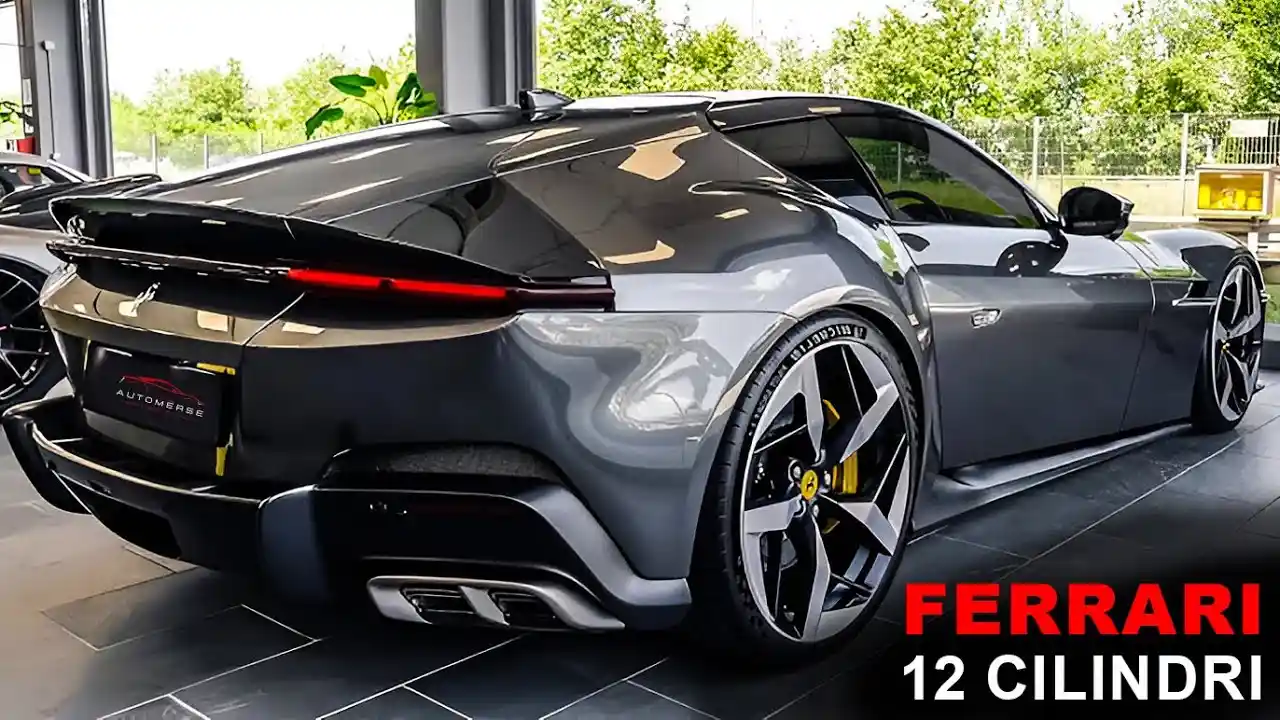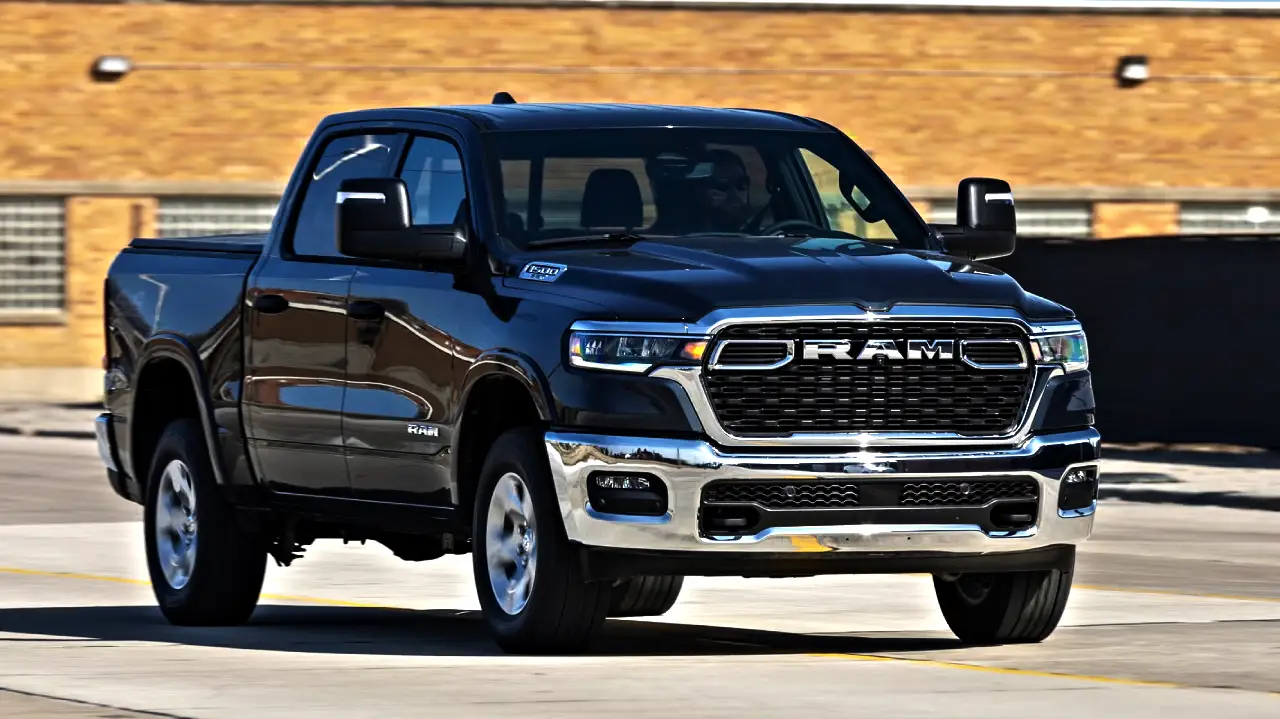Ferrari’s 12 Cilindri 2025 Review, Price, Specs, Performance & Features
2025 Ferrari 12Cilindri
The name alone, “12Cilindri,” instantly brings the engine to mind. It means “twelve cylinders” in Italian, and when spoken by a native Italian, it carries a rhythm that sounds almost like music. Ferrari kept it simple. According to product marketing manager Jacopo Marcon, they wanted the name to clearly represent the soul of the car. And that’s exactly what they’ve done. In an era where V12 engines are slowly disappearing, Ferrari is doing the opposite. They are celebrating it. The 2025 12Cilindri is built around the V12 heart, the same engine layout that helped define Ferrari’s identity for decades.
The Ferrari 812 will officially be replaced by this vehicle. It keeps the classic layout that every Ferrari fan loves—a long front hood housing a naturally aspirated V12, a two-seat cabin, and rear-wheel drive. But while it honors tradition, it doesn’t live in the past. The design is new, cutting edge, yet closely linked to Ferrari’s illustrious past. The front of the car gives a clear nod to the 365GTB/4 Daytona. However, Ferrari went further by giving the 12Cilindri a unique “faceless” appearance. Instead of showing off the headlights, they are hidden behind a slim, dark band that stretches across the front, creating a mysterious and clean look that also draws inspiration from science fiction.
2025 Rolls Royce Phantom Review: Price, Features, Specs & Fuel Economy
From the side, there’s a very bold and stylish graphic in the C-pillar that stretches forward across the roof, looking like a sleek grab handle. Just ahead of that, the roof is made of dark-tinted glass, which blends perfectly with the black sections of the body. The car’s shape follows to the traditional long-hood, short-rear design. The fenders are wide and sculpted, giving the car an athletic and muscular look. Under those big arches, you’ll find 21-inch wheels wrapped in wide tires—275 mm in the front and 315 mm in the rear. Aerodynamics are important in a Ferrari, but in this model, the elements are mostly hidden. For example, instead of a fixed rear wing, there are small flaps just above the taillights. These activate only when needed—during fast driving between 37 and 186 mph—to give the car extra stability by adding downforce. At low speeds or cruising, they stay tucked away.
Step inside, and the cabin continues the mix of old and new. The dual-cockpit layout makes sure both the driver and passenger feel like they’re in their own space. But what stands out is the high-tech dashboard. There are three digital screens inside. In front of the driver, there’s a large 15.6-inch display. A 10.3-inch media and settings touchscreen is located in the middle of the dashboard. Even the traveler has access to an 8.8-inch screen for personal use. Ferrari has used a lot of touch-sensitive buttons again, which some people love and others find frustrating. The start/stop engine button on the steering wheel feels futuristic and easy to use. But adjusting the mirrors with a swipe motion on a touch panel? That’s something many would prefer to be physical. Thankfully, the famous manettino switch is still a real knob, letting drivers choose between driving modes like Wet, Sport, and Race.
The seats in the 12Cilindri come standard with firm padding and great shape. They’re comfortable enough for long drives but still sporty enough to remind you you’re in a Ferrari. Optional sport seats are available, but they don’t offer much adjustability, so they might not suit everyone. Looking out from the driver’s seat, you see the swooping fenders, which frame the view of the road ahead beautifully. Rear visibility is okay, but there are large blind spots near the back corners, which is expected from a car with such an aggressive design.
New 2025 Porsche 911 Review, Price, Specs, Performance & Features
2025 Audi S8 Review: Price, Specs, Performance, Interior & Full Features Guide
Under the long hood, the magic lies in a naturally aspirated 6.5-liter V12 engine. This is the F140HD engine, first seen in the 812 Competizione. It generates 819 horsepower at a staggering 9250 rpm. Torque is slightly lower than before, at 500 pound-feet, delivered at 7250 rpm. The redline? A wild 9500 rpm. In a world where most engines are going smaller and turbocharged—or even replaced by electric motors—this kind of engine feels rare, special, and very much alive. The sound, the feeling, and the response of this engine can’t be matched by anything else.
This powerful V12 sits inside a new aluminum spaceframe chassis. Ferrari says it’s 15 percent stiffer than the frame used in the 812. It’s not just about stiffness, though. It’s about balance. The engine is pushed back behind the front axle, and the gearbox—an eight-speed dual-clutch—is mounted at the rear. Because of this, the car has almost perfect balance, with half of its weight in the back and half in the front. That balance helps the car stay planted in corners and feel stable at high speeds, without making the ride too harsh.
The 2025 Ferrari 12Cilindri is not just another supercar. It’s a statement. It’s a reminder that Ferrari still believes in its core values—thrilling engines, sharp design, and driver connection. While the rest of the world is chasing electric power and autonomous tech, Ferrari is giving enthusiasts what they truly want: a high-revving V12 grand tourer that looks stunning, feels amazing to drive, and carries the spirit of Ferrari’s golden era into the future.
New Cadillac Escalade Review 2025- Price, Specs, Performance & Features
Driving the 2025 Ferrari 12Cilindri
Driving the Ferrari 12Cilindri is an experience that feels both powerful and precise. Our test drive took place on the wet roads of Luxembourg, which meant we had to be careful with the throttle. Thankfully, the car’s long-travel accelerator makes it easy to control the massive power of the 12-cylinder engine. The sound from the engine is also carefully tuned. All exhaust runners are equal in length, and Ferrari revised the exhaust system behind the catalytic converters to enhance its voice. There’s no button to change the sound—what you hear is natural. It starts with a sharp bark when the engine fires up, but at low speeds, it stays quiet. The sound starts to intensify as you surpass 3000 rpm. At 4000 rpm, it turns into a deep musical roar, and past 6500 rpm, LEDs on the steering wheel light up. As the needle nears the 9500-rpm redline, the last blue lights flash to signal you’ve reached the limit.
Luckily, the rain eventually cleared, and dry roads gave us a chance to really feel the 819-horsepower engine come to life. Ferrari modified the engine with a feature known as “aspirated torque shaping.” In simple terms, it adjusts the torque in third and fourth gear to make acceleration feel never-ending. It really works. On the Goodyear test track, we reached 170 mph on the straight, and the car was still pulling hard. Ferrari says the top speed is over 211 mph, and it likely goes from 0 to 60 mph in just 2.7 seconds. Stopping power is equally impressive thanks to huge carbon-ceramic brakes, and the brake pedal feels firm and confident.
The 12Cilindri also uses rear-axle steering, which Ferrari calls “Virtual Short Wheelbase.” It’s now in its third generation and helps the car turn quickly and stay stable, even in slippery conditions. The steering itself is super accurate but never feels too twitchy. The ride is smooth thanks to the advanced suspension with magnetic dampers, which adjust constantly to keep things comfortable.
Large carbon-fiber paddles that are fixed to the steering column are used to shift gears. Compared to the 812’s 7-speed box, the new 8-speed dual-clutch transmission has a larger range of gears. The center console has three metal switches: one for launch control, one for auto and manual mode switching, and one for reverse. Considering the fact that this car is only automatic, these controls pay homage to the vintage gated manual shifters Ferrari once offered.
Although Ferrari has been producing V12 engines since 1947, this is the first time the engine arrangement has been used as the car’s name. Some wonder if the 12Cilindri might be the final V12 from Ferrari. Product manager Jacopo Marcon didn’t confirm anything—he said they’re not saying yes or no. One thing’s for sure: if this car is the last of its kind, it ends the V12 era with pure style, speed, and sound.
2025 Lamborghini Urus SE / Urus Hybrid Review, Price, Specs, Performance & Features
2025 Ford F-150 Raptor Review | Price, Specs, Performance & Features
2025 Ferrari 12Cilindri Specs
- Vehicle Type: Front-engine, rear-wheel drive, 2-door coupe
- Base Price: Estimated $467,000
- Engine: 6.5L V12 naturally aspirated, 500 lb-ft at 7250 rpm, 819 horsepower at 9250 rpm
- Transmission: 8-speed dual-clutch automatic
- Wheelbase: 106.3 inches; Length: 186.3 inches; Width: 79.0 inches; Height: 50.9 inches
- Curb Weight (Est.): 3900 lb
Performance:
- 0–60 mph: 2.7 sec
- 0–100 mph: 5.7 sec
- 1/4 mile: 10.4 sec
- Top Speed: 211+ mph
Fuel Economy (Est.): 14 mpg combined (12 city / 16 highway)







